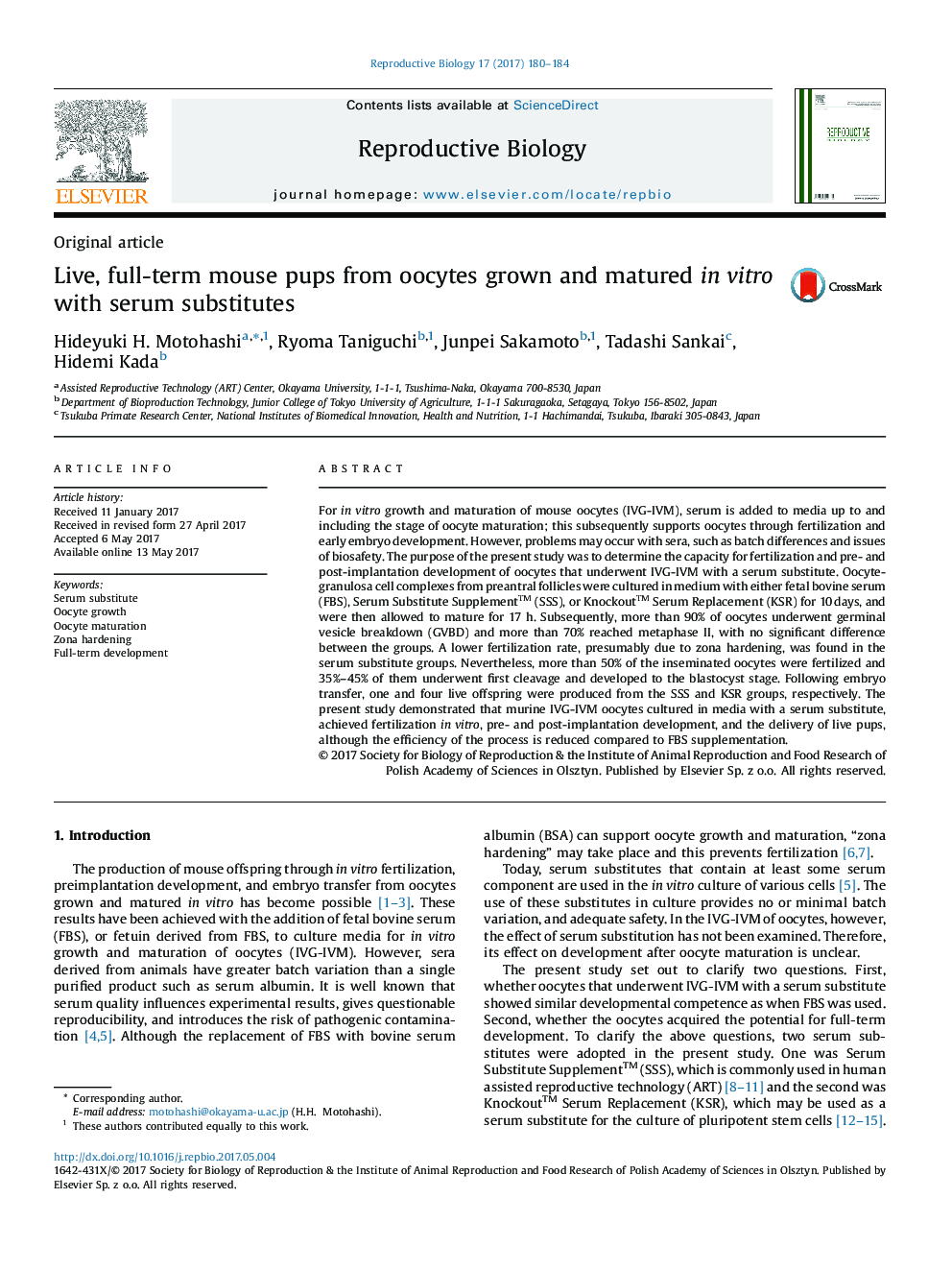| Article ID | Journal | Published Year | Pages | File Type |
|---|---|---|---|---|
| 5519058 | Reproductive Biology | 2017 | 5 Pages |
For in vitro growth and maturation of mouse oocytes (IVG-IVM), serum is added to media up to and including the stage of oocyte maturation; this subsequently supports oocytes through fertilization and early embryo development. However, problems may occur with sera, such as batch differences and issues of biosafety. The purpose of the present study was to determine the capacity for fertilization and pre- and post-implantation development of oocytes that underwent IVG-IVM with a serum substitute. Oocyte-granulosa cell complexes from preantral follicles were cultured in medium with either fetal bovine serum (FBS), Serum Substitute Supplement⢠(SSS), or Knockout⢠Serum Replacement (KSR) for 10 days, and were then allowed to mature for 17 h. Subsequently, more than 90% of oocytes underwent germinal vesicle breakdown (GVBD) and more than 70% reached metaphase II, with no significant difference between the groups. A lower fertilization rate, presumably due to zona hardening, was found in the serum substitute groups. Nevertheless, more than 50% of the inseminated oocytes were fertilized and 35%-45% of them underwent first cleavage and developed to the blastocyst stage. Following embryo transfer, one and four live offspring were produced from the SSS and KSR groups, respectively. The present study demonstrated that murine IVG-IVM oocytes cultured in media with a serum substitute, achieved fertilization in vitro, pre- and post-implantation development, and the delivery of live pups, although the efficiency of the process is reduced compared to FBS supplementation.
